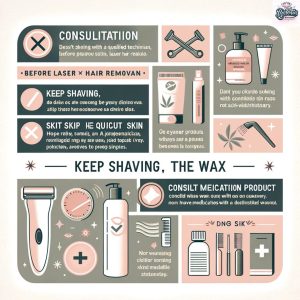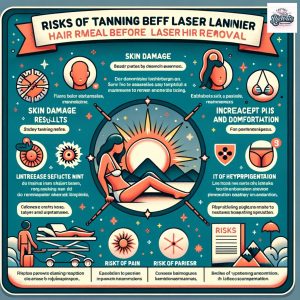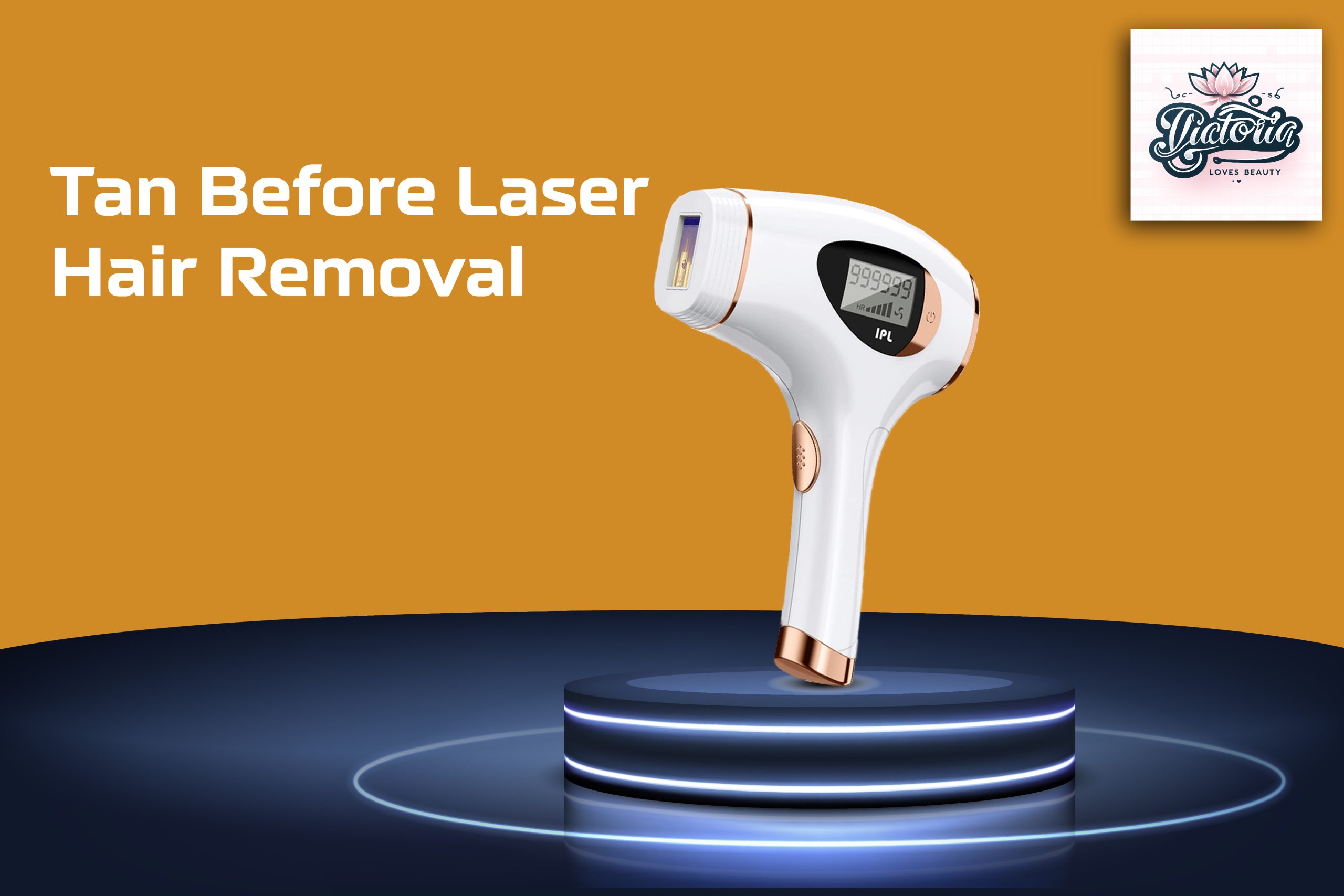Laser hair removal has emerged as a popular and effective method for removing unwanted hair. It stands out from traditional methods like waxing and shaving, not just for its efficacy but also for being cost-effective in the long run. However, when it comes to preparing for your laser hair removal session, there are some important considerations to remember, especially regarding tanning. The different tanning, whether from the sun or a tanning bed, darkens the skin. Tanned skin can interfere with the laser’s ability to target hair follicles effectively for safety and the most effective result. It’s generally advisable to avoid tanning for several weeks before and after laser hair removal. If you are planning to undergo this procedure, consult a qualified and experienced practitioner who can provide specific guidelines for preparation and aftercare. Following these guidelines is essential to minimize the risks and maximize the benefits of laser hair removal. Tanning before laser hair removal can lead to uneven skin pigmentation.
The Impact of Tanning on Laser Hair Removal
Tanning is significantly a different hair-removable for the different sanitation for The risk and meaning of the department will this is always a risk for a burn a reduce treatment effective treatment as the leaser may reduce treatment efficiently as the leaser may not distinguish between the skin and hair follicles effectively. It can also lead to uneven pigmentation and may require postponing treatments until the skin returns to its natural color. There are different considerations for laser technology in many treatments of tattoo ink.
Tanning and Laser Technology: Technological advancements, such as the LightSheer Duet, have enabled laser hair removal on tanned or darker skin types more effectively than before. However, if your skin is tanned, the laser settings can’t be as aggressive as those on untanned skin. The reason? The laser targets pigment and tanned skin’s closer coloration to the hair pigment can lead to less effective results. Consequently, you might need more sessions to achieve complete hair removal. Tanning and laser technology are incompatible, and tanning can compromise the safety and efficacy of several laser treatments. It is preferable to contact a skilled practitioner who can give precise advice for pretreatment and post-treatment care, including avoiding tanning and applying sunscreen as needed, to ensure the best and safest outcomes.
Natural Tan and Laser Efficiency: If you’ve been basking in natural sunlight, it’s advisable to wait until your tan fades before undergoing laser hair removal. Tanned skin can risk skin discoloration and reduced efficiency of the treatment. The laser must distinguish between the skin and hair pigment, and tan blurs this distinction, making the procedure less effective. A natural tan can interface with the efficiency and safety of laser treatments, especially for those who rely on targeting melanin. To achieve the best and most reliable results. It is advisable to consult with a qualified practitioner who can provide specific guidelines for pretreatment and post-treatment care.
Artificial Tans Are a No-Go: Similarly, self-tanning products are a significant no-no before laser hair removal. These products darken the skin and can absorb the laser energy meant for the hair follicles, leading to potential burns, blisters, and decreased effectiveness of the treatment. Artificial tans are generally discouraged before laser treatments due to the increased risk of burns, reduced treatment effectiveness, and potential for uneven pigmentation. To ensure the best and safest results from laser treatments, consult a qualified practitioner who can provide specific pretreatment and post-treatment care guidelines, including avoiding artificial tans and using sunscreen as needed.
Best Practices Before Laser Hair Removal
Before going to the treatment for the lease hair, you can follow certain best practices for consideration. Schedule a consultation with a qualified and experienced laser technician or dermatologist for the skin history, which will be handy for your medications. By following these best practices, you can maximize the effectiveness of your laser hair removal treatment while minimizing the risk of complications and adverse reactions. Always consult a qualified practitioner who can tailor their recommendations to your needs and skin type.

Keep Shaving, But Skip the Wax: Contrary to what you might think, you should continue to shave before your laser hair removal appointment. Shaving allows the laser to target the hair follicle at the root. However, avoid tweezing or waxing since these methods remove the hair root, which is the target of the laser treatment. Keeping saving is the best treatment in waxing and plucking. Shaving is recommended because it leaves the hair intact beneath the skin’s surface while removing the hair above the skin. On the other hand, waxing and plucking remove the hair from the root. When there’s no hair within the follicles, the laser won’t have a target to focus on, making the treatment less effective. So, continue shaving as needed in the days leading up to your laser hair removal session to ensure the best results.
Skin Care Product Usage: On the day of your treatment, steer clear of moisturizers, lotions, or oils. These can cause complications and increase the risk of skin discoloration. If you’re using prescribed facial creams, particularly for acne, it’s recommended to stop using them a few weeks before your laser treatment to reduce skin sensitivity. Skincare routines should be tailored to your individual skin type and concerns. What works for one person may not work for another, so pay attention to how your skin responds to different products and adjust your routine accordingly.
Consult with a Doctor: If you’re on any prescribed medications, check with your doctor. Certain medications can impact your suitability for laser hair removal treatment. Healthcare professionals are valuable resources for addressing your skincare concerns and ensuring your skin’s health and well-being. They can provide expert guidance and tailored recommendations to help you achieve your skincare goals safely and effectively.
Final Thoughts
In conclusion, while modern technology has enabled laser hair removal on tanned skin, there are better scenarios than this. Avoiding tanning before your laser hair removal sessions is best for optimal results. If you’re already tanned, consider waiting until your tan fades. Additionally, preparing your skin correctly and consulting with a professional can significantly enhance the safety and effectiveness of your laser hair removal experience. Skincare and well-being will have different forms of individual care. It is necessary to have different skin types, concerns, and sensitivity. When in doubt or facing persistent skincare issues, do not hesitate to consult a dermatologist, doctor, or skincare professional. Skincare is not just about products; a healthy lifestyle, including staying hydrated, eating well, getting enough sleep, and managing stress, plays a significant role in your skin’s health.
Tanning before laser hair removal can lead to various issues, including:

- Skin Damage: Tanning can cause skin damage, such as sunburn, making your skin more sensitive and prone to irritation during the laser treatment. It can also increase the risk of blistering and scarring.
- Ineffective Results: Laser hair removal works best on individuals with lighter skin and darker hair, as the contrast between the skin and hair color allows the laser to target the hair follicles more effectively. Tanning can reduce this contrast, making the treatment less effective.
- Increased Pain and Discomfort: Tanned skin is more sensitive, which can result in increased pain and discomfort during the laser hair removal session. It can make the procedure more unpleasant than it needs to be.
- Risk of Hyperpigmentation: Tanning before laser hair removal can increase the risk of post-treatment hyperpigmentation, which is the darkening of the skin in treated areas. It can be a long-lasting and undesirable side effect.
Avoid tanning for at least four to six weeks before your treatment is recommended to achieve the best and safest results with laser hair removal. It’s also essential to discuss your skin type, recent sun exposure, and any tanning activities with your licensed laser technician or dermatologist before starting the procedure. They can guide the best approach to ensure a successful and comfortable experience.
Conclusion
Before leased hair is removable, Tannin can have several adverse effects on the effectiveness and safety of the procedure. It increases the melanin content in the skin, making it more challenging to measure the hair follicles effectively. Requiring more sessions to achieve the desired results could increase discomfort and side effects.
Additionally, tanning increases the risk of skin damage, including burns, blisters, and changes in pigmentation, during the laser hair removal process. The increased melanin in tanned skin can absorb more laser energy, leading to higher risks of adverse reactions.
To ensure the best outcomes and minimize potential risks, avoiding natural and artificial tanning before undergoing laser hair removal is advisable. It is essential to follow the recommendations of your licensed practitioner, including adhering to their guidelines regarding sun exposure and skincare routines in the lead-up to your laser hair removal sessions. Ultimately, prioritizing your skin’s health and following proper pretreatment instructions will contribute to a safer and more effective laser hair removal experience.

Beauty enthusiast, mom on-the-go, and coffee addict (not necessarily in that order!). When she’s not chasing after her adorable toddler, Victoria is busy researching the latest beauty trends, testing out products, and sharing her discoveries with the world. Join her on this journey of self-care, empowerment, and finding your own unique spark of beauty!
